Horta of Valencia
The Horta of Valencia (Valencian: L'Horta de València; Spanish: Huerta de Valencia) is a historical comarca and urban area of the Valencian Community. The Horta of Valencia consists of Valencia and three comarcas: Horta Nord, Horta Sud, Horta Oest.
Horta of Valencia | |
|---|---|
historical comarca and urban area | |
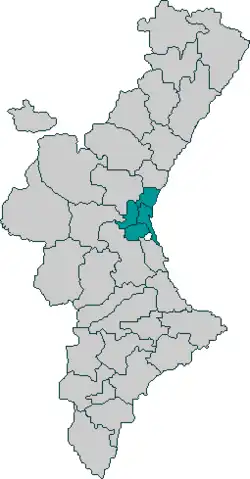 Huerta de Valencia on map of Valencian Community | |
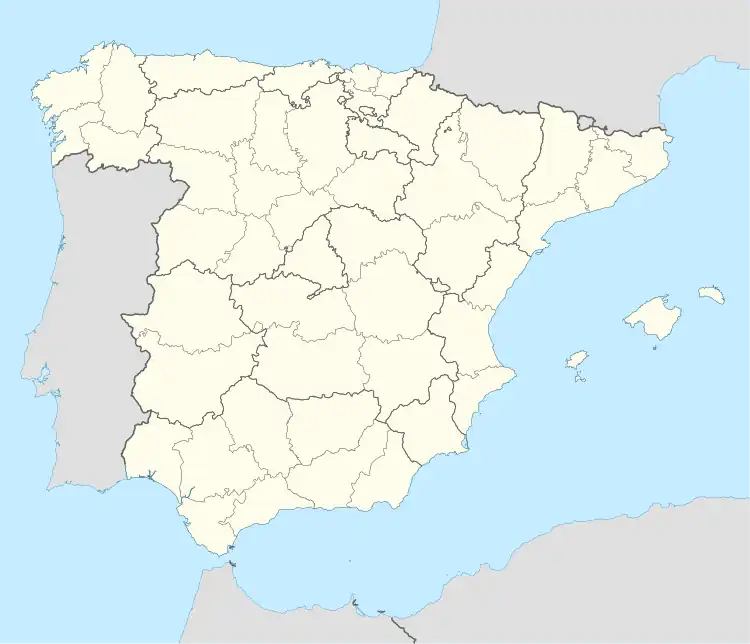 Horta of Valencia 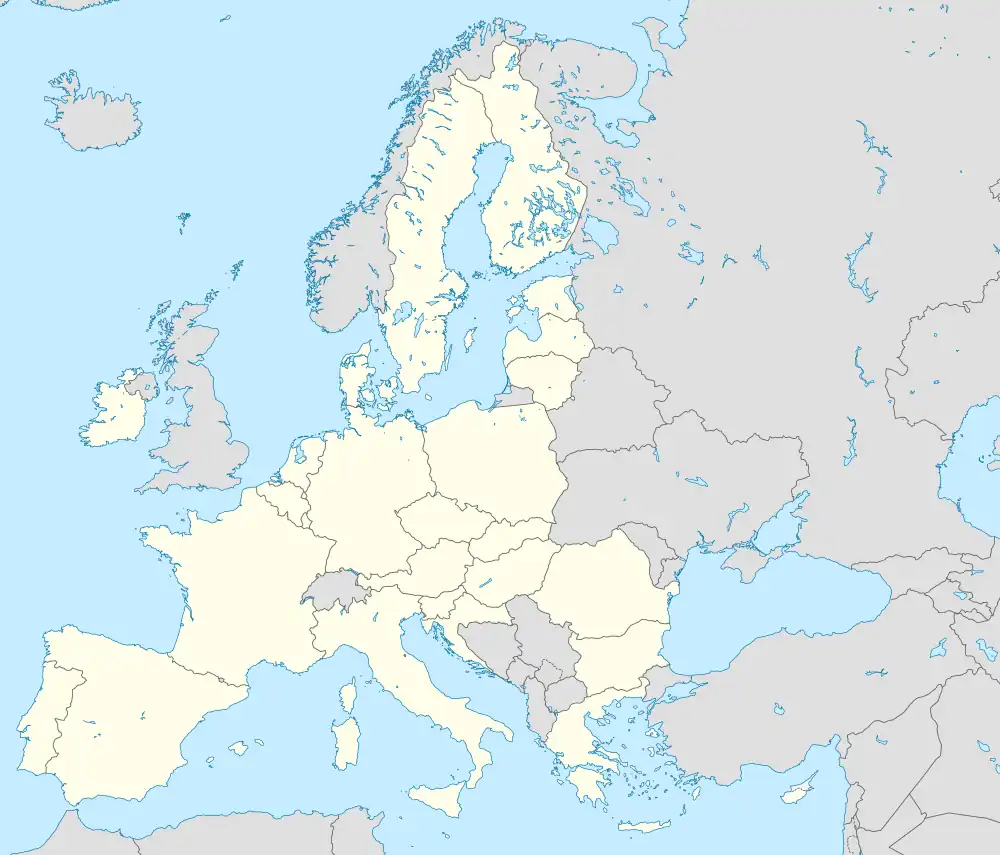 Horta of Valencia | |
| Coordinates: 39°28′N 0°22′W | |
| Country | |
| Autonomous community | |
| Province | Valencia |
| City and comarcas | Valencia, Horta Nord, Horta Sud, Horta Oest |
| Area | |
| • Total | 627.65 km2 (242.34 sq mi) |
| Population | |
| • Total | 1,495,883 |
| • Density | 2,400/km2 (6,200/sq mi) |
| Demonym | Valencian |
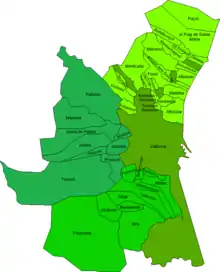
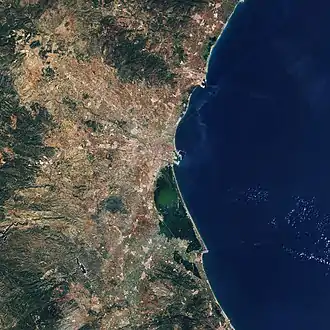
Demography
It is the most populated region of País Valencià. The Horta of Valencia experienced the largest increase in population, especially as an immigrant receiver. Its urban expansion has motivated the creation of several urbanisations, and the incorporation to the urban nucleus of the metropolis of the earlier towns. Nowadays, the expansion has also contributed to its separation in four regions that are currently considered sub-regions.
Geography
The region is located within Puçol (in the North), the Albufera (in the South), and Paterna, Torrent and Montcada (in the West). It is a lowland region that elevates progressively from the sea towards the inland.
The river Turia flows through Valencia into the Balearic sea, coming in direct range of the island Ibiza (Eivissa on Google earth) in the Balearic Islands.
The Horta is in the Autonomous community of Valencia.
Origin
Originally Valencia was founded as a base for Roman campaigns into Spain.
Early on in its life, Valencia was also a place of Agriculture. Roman planting of several fruits carried on when the Caliphs of Arabia seized Spain, with their traditional Arab irrigation culture being used.
For these reasons, The Historical Irrigation System at l'Horta de València was named a Globally Important Agricultural Heritage Site in 2019.[1]
Economy
Agriculture
In the typical Mediterranean climate, the Horta has mild winters and very hot summers. The historical activity of the region had been agriculture, with a predominance of three types of crops: orange, vegetables and rice. The watering system is structured around 13 ditches that allow irrigation of crops all year. Some municipal areas have a certain expertise regarding crops: tiger nuts in Alboraya and Almàssera; tomatoes and peppers for canning El Puig, Puçol and Tavernes Blanques; strawberries in Rafelbunyol; melons and watermelons in Meliana and Almàssera, and so on. Rice is distressed, but it is still being cultivated on the edges of the Albufera.
Industry
To the west of the region, towns are situated on the edge of the Horta, around the capital city: Montcada, with textile and fireworks industries; Burjassot, together with Godella, with ceramic and cement factories; Paterna, Manises and Quart de Poblet, which have an important ceramic industry; Mislata, which presents paper and textile industries, and so on. In the north, the towns follow a parallel line to the coast: Tavernes Blanques, with ceramic and porcelain industries; Massamagrell, Meliana, Puçol, basically agricultural, etc. In the south, there are several towns physically attached to each other: Benetússer, Alfafar, Poblenou de la Corona, Sedaví, Massanassa, Catarroja and Silla. The capital city of the region, Valencia, which is also that of País Valencià with more than 760 000 inhabitants, currently maintains the agriculture that made it famous in the past, but it has also developed a lot of industry (furniture, chemical, mechanical) and trade.
References
- "Historical Waterscape of l'Horta de València". FAO.org. Retrieved 2022-10-07.
Sources
- Besó Ros, Adrià (2016). Horts de tarongers. La formació del verger valencià. Valencia: Institució Alfons el Magnànim. p. 453. ISBN 978-84-7822-686-3.
- Sala Giner, Daniel. 2007. La milenaria Acequia de Mislata. Javier Boronat (ed.). Valencia. 183 pages.
- L'Horta de València: estudis comarcals de la província de València (in Catalan). PUV. 2018. ISBN 9788491331742.
- Esquilache, Ferran (2018). Els constructors de l'Horta de València : origen, evolució i estructura social d'una gran horta andalusina entre els segles VIII i XIII. PUV. ISBN 9788491343721.